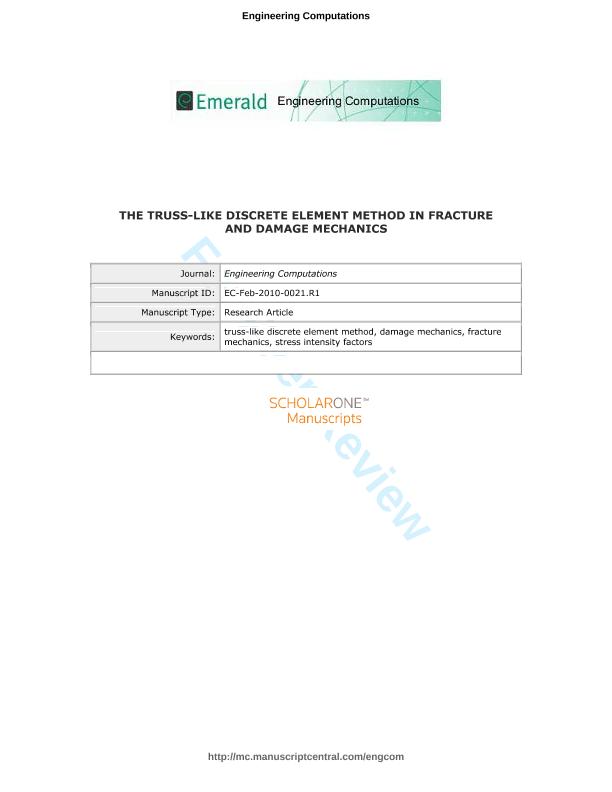Artículo
The truss‐like discrete element method in fracture and damage mechanics
Fecha de publicación:
12/2011
Editorial:
Emerald Group Publishing Limited
Revista:
Engineering Computations
ISSN:
0264-4401
Idioma:
Inglés
Tipo de recurso:
Artículo publicado
Clasificación temática:
Resumen
Purpose: It is the purpose of this paper to further develop the truss-like discrete element method (DEM) in order to make it suitable to deal with damage and fracture problems. Design/methodology/approach: Finite and boundary elements are the best developed methods in the field of numerical fracture and damage mechanics. However, these methods are based on a continuum approach, and thus, the modelling of crack nucleation and propagation could be sometimes a cumbersome task. Besides, discrete methods possess the natural ability to introduce discontinuities in a very direct and intuitive way by simply breaking the link between their discrete components. Within this context, the present work extends the capabilities of a truss-like DEM via the introduction of three novel features: a tri-linear elasto-plastic constitutive law; a methodology for crack discretization and the computation of stress intensity factors; and a methodology for the computation of the stress field components from the unixial discrete-element results. Findings: Obtained results show the suitability and the performance of the proposed methodologies to solve static and dynamic crack problems (including crack propagation) in brittle and elasto-plastic materials. Computed results are in good agreement with experimental and numerical results reported in the bibliography. Originality/value: The scope of the truss-like DEM has been extended. New procedures have been introduced to deal with elastoplastic crack problems and to improve the post processing of the stress results. Research implications: This paper demonstrates the versatility of the truss-like DEM to deal with damage mechanics problems. The approach used in this work can be extended to the implementation of time dependent damage mechanisms. Besides, the capabilities of the discrete approach could be exploited by coupling the truss-like DEM to finite and boundary element methods. Coupling strategies would allow using the DEM to model the regions of the problem where crack nucleation and propagation occurs, while finite or boundary elements are used to model the undamaged regions.
Archivos asociados
Licencia
Identificadores
Colecciones
Articulos(INTEMA)
Articulos de INST.DE INV.EN CIENCIA Y TECNOL.MATERIALES (I)
Articulos de INST.DE INV.EN CIENCIA Y TECNOL.MATERIALES (I)
Citación
Kosteski, Luis; Iturrioz, Ignacio; Batista, Ruben Galiano; Cisilino, Adrian Pablo; The truss‐like discrete element method in fracture and damage mechanics; Emerald Group Publishing Limited; Engineering Computations; 28; 6; 12-2011; 765-787
Compartir
Altmétricas




